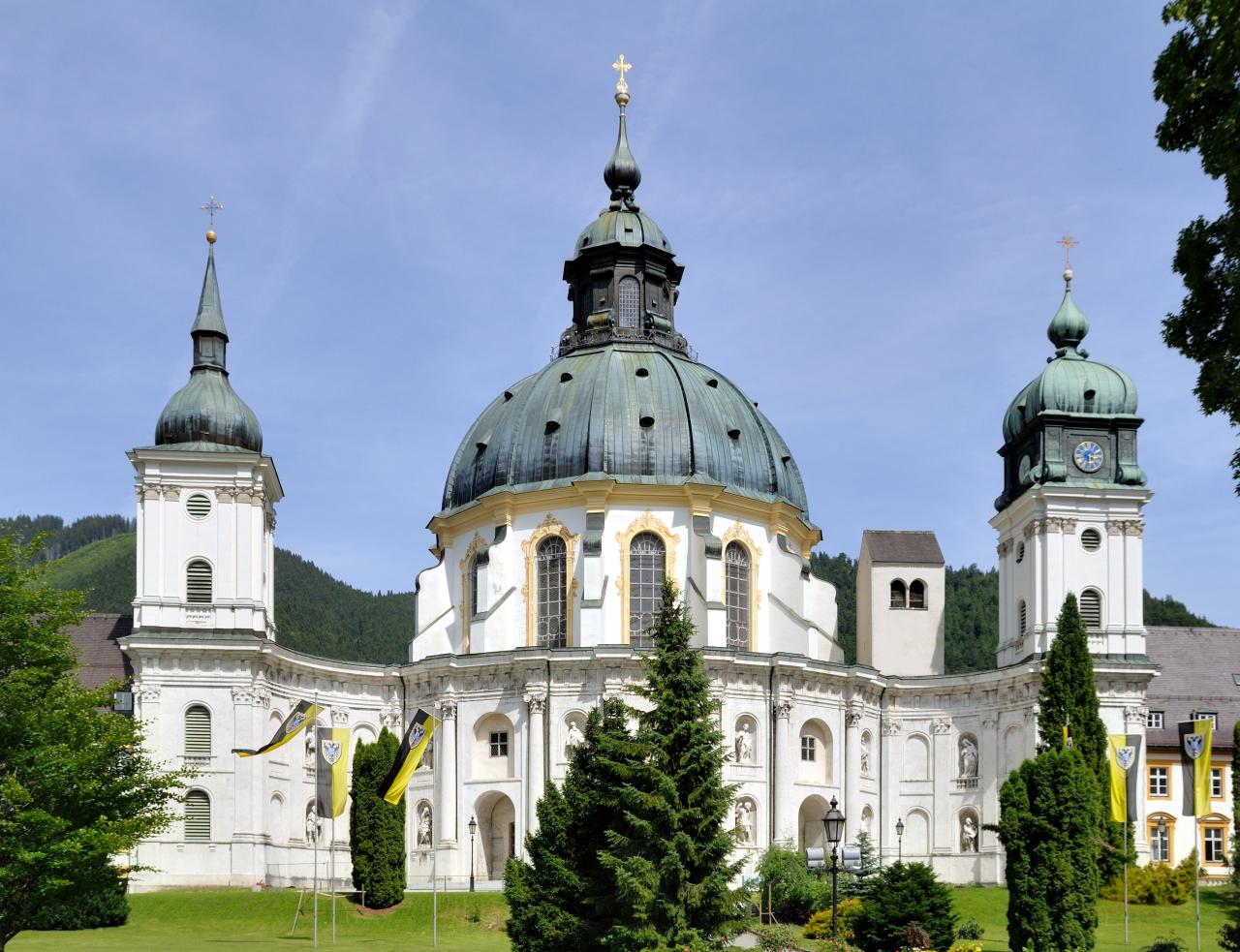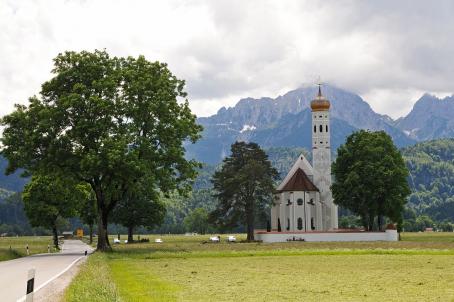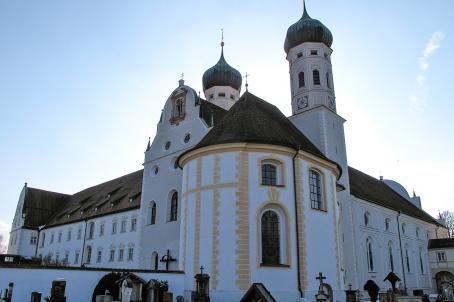Ettal Abbey
It is a Benedictine monastery founded in the 14th century by Emperor Ludwig IV, the Bavarian. It is a well-known pilgrimage destination because of the white marble statue of the Virgin Mary, who allegedly led the emperor to fund the monastery.
About this building
Legend has it that an angel appeared to Emperor Ludwig IV, the Bavarian, when he was on a trip in Italy. Upon his return, a statue of Virgin Mary, made of white marble by the Pisano School, was placed on the spot where he was told to erect a temple, in the Graswang valley. The statue soon attracted hundreds of pilgrims who wanted to venerate the holy image.
The abbey was dissolved in 1803 during the secularization of religious properties in Bavaria. The basilica then passed into private hands and was finally donated to the order of the Benedictines of Scheyern Abbey, who re-founded the convent on the same site.






